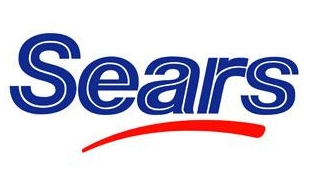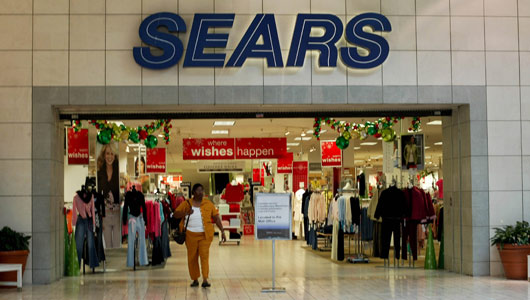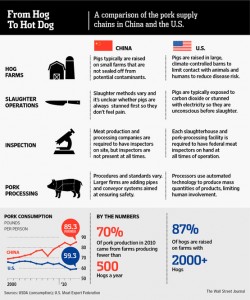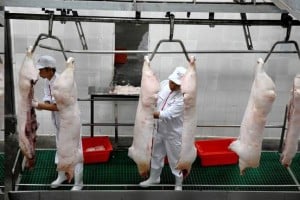Mobile Age – Take it or leave it.
One of the things I have noticed recently is how everything is shifting to mobile. The younger generations don’t even know how to use any other device to communicate outside their cell phone or other hand held devices. Base on a post by Stephen Pierzchala on January 15, 2013, titled Mobile Commerce Has Come of Age. Are You Ready? It is obvious that there is a paradigm shift to mobile devices for personal use and commerce. Which made me think if there will be more mobile projects targeting mobile users of all ages. The mobile apps in the US have doubled in the past years. Stephen Pierzhala noted that “Mobile is the fastest-growing segment of the online commerce world”.
Figure 1. Figure 2
This fact is backed up the Global Association of Mobiles companies (GMSA). See the figure below. Universities lecture are available online. Many students are used to listening to class lectures on their mobile device. There are several factors leading to this growth. There are so many apps for mobile devices. Almost all major banks, insurance companies and supermarkets have a mobile app to buy products and/or services online.
The cultural shift to mobile life style is global in nature but not at the same rate globally. The US is leading the paradigm shift followed by Europe. In the 2013 report by GSMA (link 2 below) shows that mobile wireless data use per connection in the U.S. is significantly higher than in the EU. In 2013, Cisco projects U.S. customers will use nearly twice as much data per connection as customers in the EU. Figure 3 in this blog show how much data US mobile consumers are using compare to European mobile consumer.
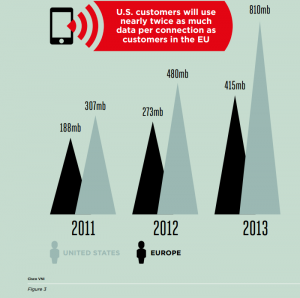
The mobile space will continue to grow there are endless providers of mobile devices and services. One of the major problems is the quality of service. The mobile space quality of service varies from one provider to another, even within the US which has the highest rating globally. Mobile users in the US still complain about poor quality of service depending on where you are located. While the mobile industry has grown significantly especially with products such as I-Phone, I-pad, etc, there are still room for a lot of improvement. With respect to project management it is interesting to know which of the project management principles or philosophy will not work very well when developing mobile products, applications (apps), or services. I have seen many DePaul students especially the undergrad playing video games on their mobile devices. Which make me to also wonder the type of problems these mobile devices introduces to our society and what educational project will be needed to build awareness against the dangers it poses. I believe don’t text while driving is clearly established as an example. ATT has developed an app to solve this problem see reference 4.
Reference
- http://www.dmnews.com/mobile-commerce-has-come-of-age-are-you-ready/article/276182/#
- http://www.gsmamobilewirelessperformance.com/GSMA_Mobile_Wireless_Performance_May2013.pdf
- http://www.mobal.com/international-cell-phones/
- http://developer.att.com/developer/forward.jsp?passedItemId=12500023&_requestid=39763&gclid=CNjAvZ2Q1rcCFbFAMgodi2oAGQ

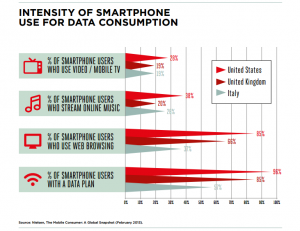

 As summer approaches, most of us are hoping for a summer getaway. Perhaps one of the most stressful aspects of travel is getting to your destination, and with airfare only increasing, cost is often a key factor in making travel decisions. For a penny-pinching traveler, Spirit Airlines is a frequent air carrier of choice, due to its prices that are considerably lower than its competitors. Spirit’s average base fare is around $79, as opposed to a competitor’s base fare, which would be well over $100.
As summer approaches, most of us are hoping for a summer getaway. Perhaps one of the most stressful aspects of travel is getting to your destination, and with airfare only increasing, cost is often a key factor in making travel decisions. For a penny-pinching traveler, Spirit Airlines is a frequent air carrier of choice, due to its prices that are considerably lower than its competitors. Spirit’s average base fare is around $79, as opposed to a competitor’s base fare, which would be well over $100.

